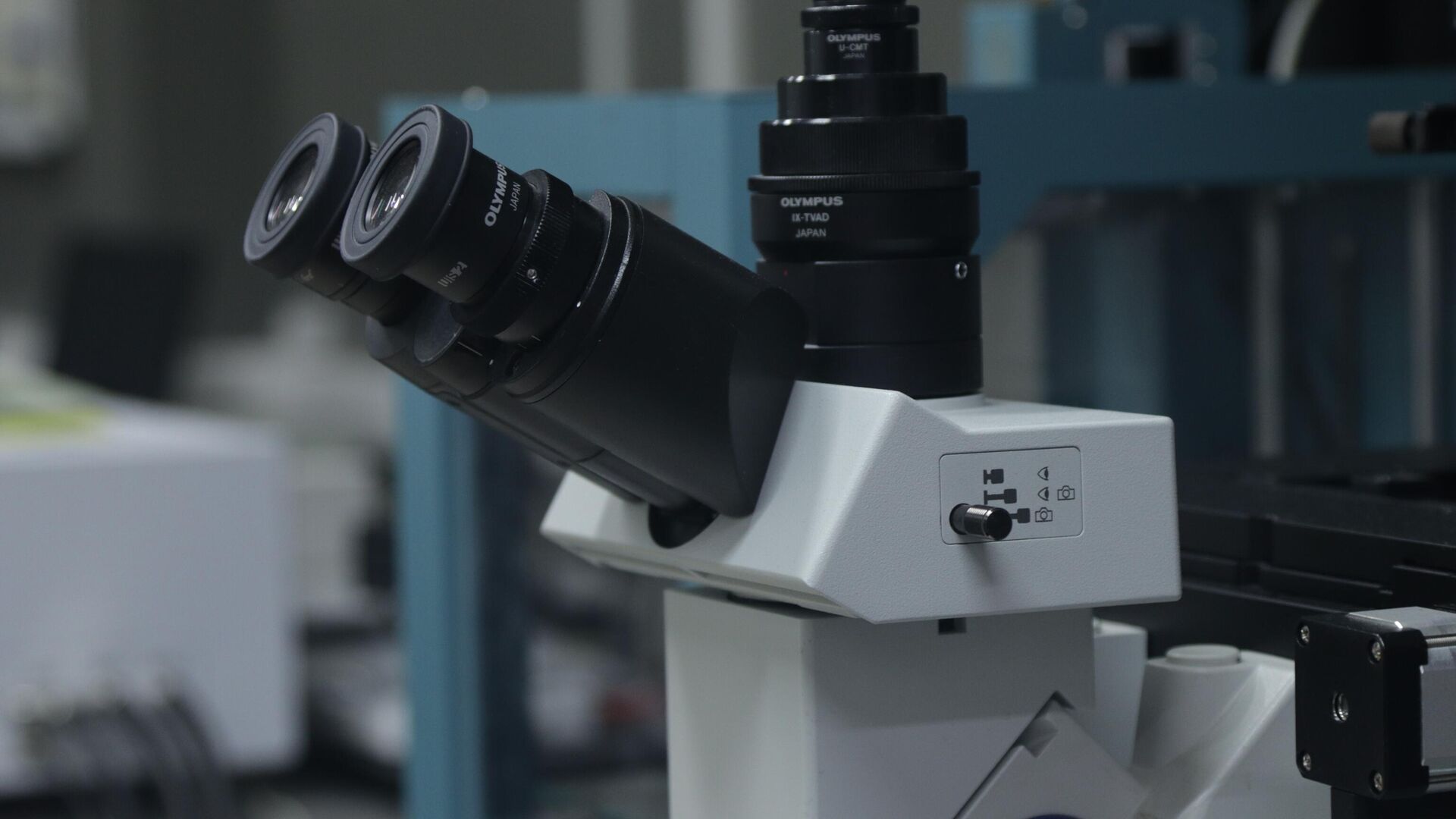https://sputnikglobe.com/20230822/researchers-from-china-britain-create-highest-resolution-superlens-to-date-1112774860.html
Researchers From China, Britain Create Highest-Resolution Superlens to Date
Researchers From China, Britain Create Highest-Resolution Superlens to Date
Sputnik International
Scientists have discovered a way to overcome the diffraction limit in optical lenses.
2023-08-22T03:18+0000
2023-08-22T03:18+0000
2023-08-22T03:17+0000
beyond politics
science & tech
microscope
lens
china
university of hong kong
imperial college london
britain
https://cdn1.img.sputnikglobe.com/img/07e6/0b/0a/1103975373_0:160:3073:1888_1920x0_80_0_0_2a3cdddbb306bdec9d910eca6d3c2734.jpg
A research team led by professor Shuang Zhang from the University of Hong Kong, along with those from the Imperial College London and the University of California, Berkeley, have discovered a way to overcome the “diffraction limit” (the maximum limit of resolution) in optical lenses.In 2000, scientist John Pendry from the Imperial College London, conceptualized the superlens, which can be crafted from negative index media or a noble metal, such as gold, silver or platinum. These superlenses can then create images on a subwavelength scale.Following the idea, Zhang and his team conducted an experimental demonstration using a silver thin film and a silver/dielectric multilayer stack to produce their superimaging.“The ultimate goal of optical imaging technology is resolution. Superlenses broke this limit and astonished physicists. However, the mixed surface made with metal and electrolyte can cause severe optical loss and the problem has existed for 20 years,” said Zheng Guoxing, a Wuhan University professor who was not involved in the research.Then, to overcome the issue that all superlenses face (optical loss, an issue that the development of nanophotonics has been facing for three decades), scientists used a combination of multiple frequencies to increase the resolution and overcome the optical loss.“This is a beautiful and universal method, usable across multiple optical frequencies, and extendable to other wave systems like sound waves, elastic waves and quantum waves to solve the loss problem,” said professor Zhang Xiang, the president of University of Hong Kong, who helped work on the study.Zhang added that the method is universally applicable, and can be “leveraged to tackle loss in other wave systems” including sound waves, elastic waves, quantum waves, and of course, raising imaging quality to new standards.
lens
china
britain
Sputnik International
feedback@sputniknews.com
+74956456601
MIA „Rossiya Segodnya“
2023
News
en_EN
Sputnik International
feedback@sputniknews.com
+74956456601
MIA „Rossiya Segodnya“
Sputnik International
feedback@sputniknews.com
+74956456601
MIA „Rossiya Segodnya“
china, britian, science, microscope, superlens
china, britian, science, microscope, superlens
Researchers From China, Britain Create Highest-Resolution Superlens to Date
Using a mathematical formula to turn a complicated light wave into a mix of simpler waves, the scientists were able to solve the image quality issues prevalent in optical lenses.
A
research team led by professor Shuang Zhang from the University of Hong Kong, along with those from the Imperial College London and the University of California, Berkeley, have discovered a way to overcome the “diffraction limit” (the maximum limit of resolution) in optical lenses.
In 2000, scientist John Pendry from the Imperial College London, conceptualized the superlens, which can be crafted from negative index media or a noble metal, such as gold, silver or platinum. These superlenses can then create images on a subwavelength scale.
Following the idea, Zhang and his team conducted an experimental demonstration using a silver thin film and a silver/dielectric multilayer stack to produce their superimaging.
“The ultimate goal of optical imaging technology is resolution. Superlenses broke this limit and astonished physicists. However, the mixed surface made with metal and electrolyte can cause severe optical loss and the problem has existed for 20 years,” said Zheng Guoxing, a Wuhan University professor who was not involved in the research.
Then, to overcome the issue that all superlenses face (optical loss, an issue that the development of nanophotonics has been facing for three decades), scientists used a combination of multiple frequencies to increase the resolution and overcome the optical loss.
"To solve the optical loss problem in some important applications, we have proposed a practical solution—using a novel synthetic complex wave excitation to obtain virtual gain, and then offset the intrinsic loss of the optical system. As a verification, we applied this approach to the superlens imaging mechanism and theoretically improved imaging resolution significantly," explained Zhang.
“This is a beautiful and universal method, usable across multiple optical frequencies, and extendable to other wave systems like sound waves, elastic waves and quantum waves to solve the loss problem,” said professor
Zhang Xiang, the president of University of Hong Kong, who helped work on the study.
Zhang added that the method is universally applicable, and can be “leveraged to tackle loss in other wave systems” including sound waves, elastic waves, quantum waves, and of course, raising imaging quality to new standards.


